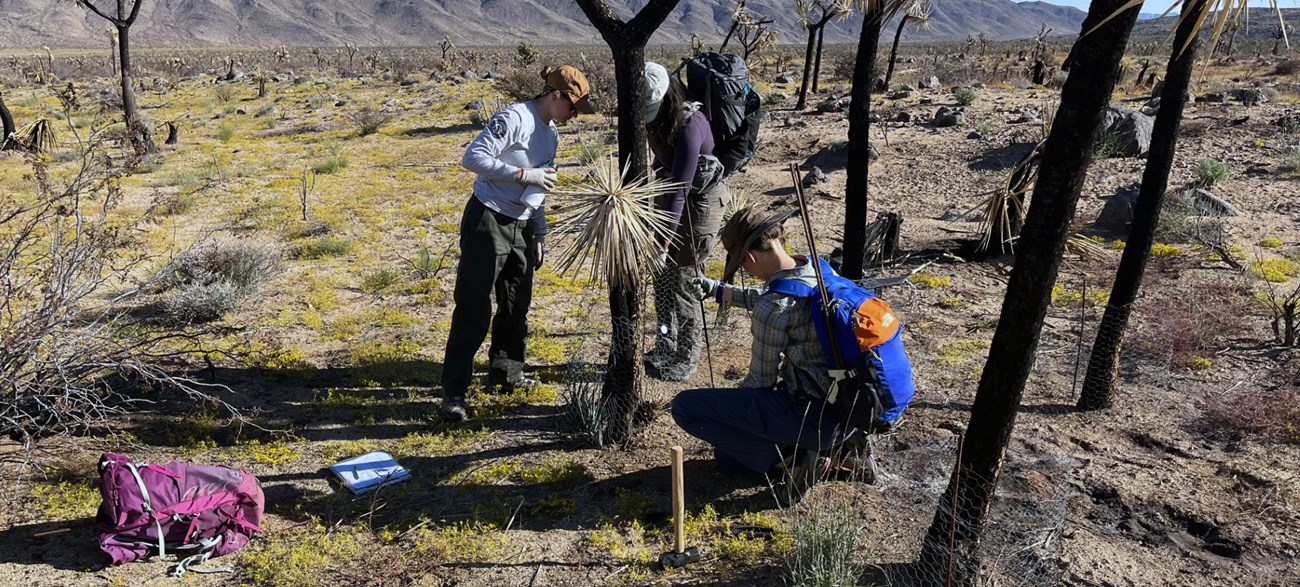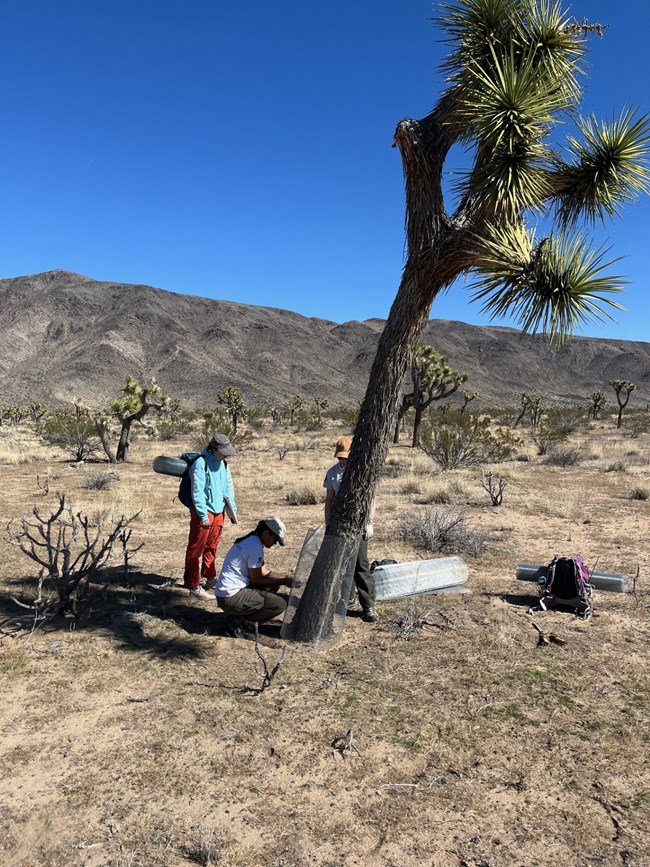Last updated: December 5, 2024
Article
Promoting post-fire recovery of western Joshua tree habitat

NPS/O ANDERSON
The human-caused Geology Fire started on June 10, 2023, along the Berdoo Canyon Road, one of Joshua Tree National Park’s designated backcountry routes. The park’s fire management plan calls for immediate suppression of wildfire in western Joshua tree (Yucca brevifolia) habitat to protect a resource greatly threatened by climate change. Aggressive fire suppression, including the use of fire retardant by aircraft and offroad engine travel in Wilderness, limited the fire to 1,033 acres by the morning of June 11, despite high winds.
Historic fire return intervals in the Mojave Desert were long, over a century in some areas. The consequence of such a long fire return interval is that Joshua trees are not adapted to wildfires. In severe fires, Joshua tree mortality is generally 80% or greater. Due to a scarcity of small plants post-fire, rodents eating surviving Joshua trees and their ground-based sprouts, can lead to additional mortality of trees that survived a wildfire. Fire severity varied across the Geology Fire footprint, but a combination of rapid wind-driven spread and less dense plant coverage in 60% of the burned area resulted in about 30% mortality of the estimated 10,000 Joshua trees in the fire perimeter.

NPS/O ANDERSON
The park developed a Burned Area Recovery plan to promote recovery of native vegetation that included establishing ten 2.5-acre restoration islands within the burned area where actions would be taken to promote re-establishment of native perennial vegetation. Within these islands, container-grown western Joshua trees and associated shrubs and grasses would be planted so that the islands would serve as seed sources for the burned area. Plantings and surviving Joshua trees would be caged to protect them from herbivores. Additionally, seeds of native species would be sown in sculpted seed pits in the islands to promote establishment from seed.
The primary time for work to be done outdoors in this park is October to May. With funding released in March 2024, it left little time to accomplish field work before the heat of summer. Despite this challenge, park staff surveyed the burned area and established the 10 restoration islands in topographic locations where overland flow will concentrate rainfall. Staff caged 100 Joshua tree basal sprouts and 100 surviving trees to protect them from herbivore damage and marked 100 uncaged controls for both sprouts and trees for assessment of treatment effectiveness. They began propagation of the container-grown plant materials for the out-planting. Seeds were collected, but hot weather arrived before the seed pits could be established. Resumption of field work will continue when cooler weather arrives later in 2024.
